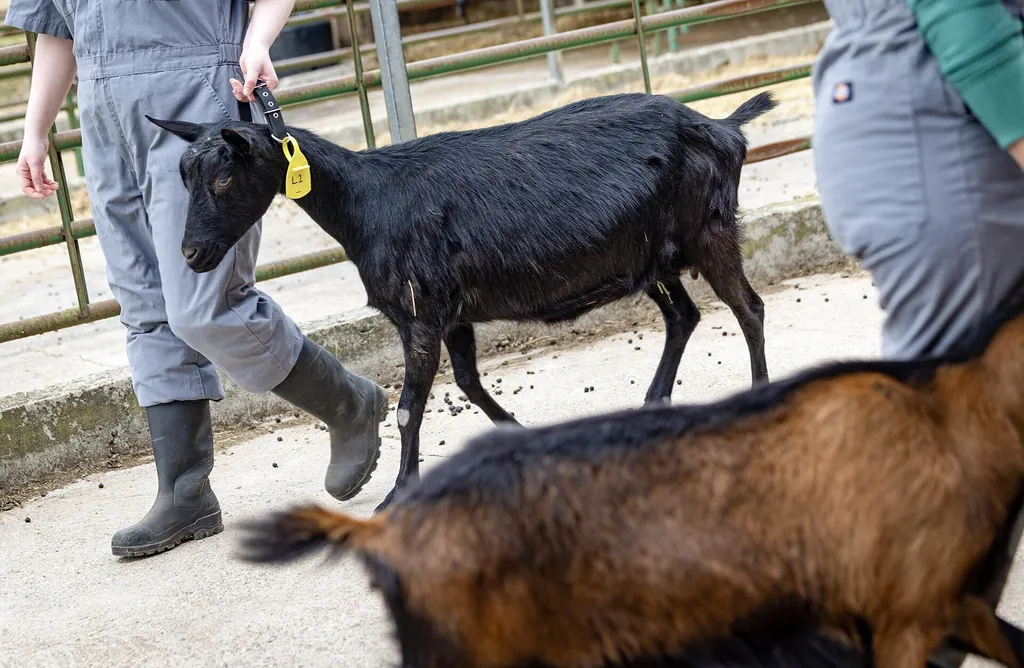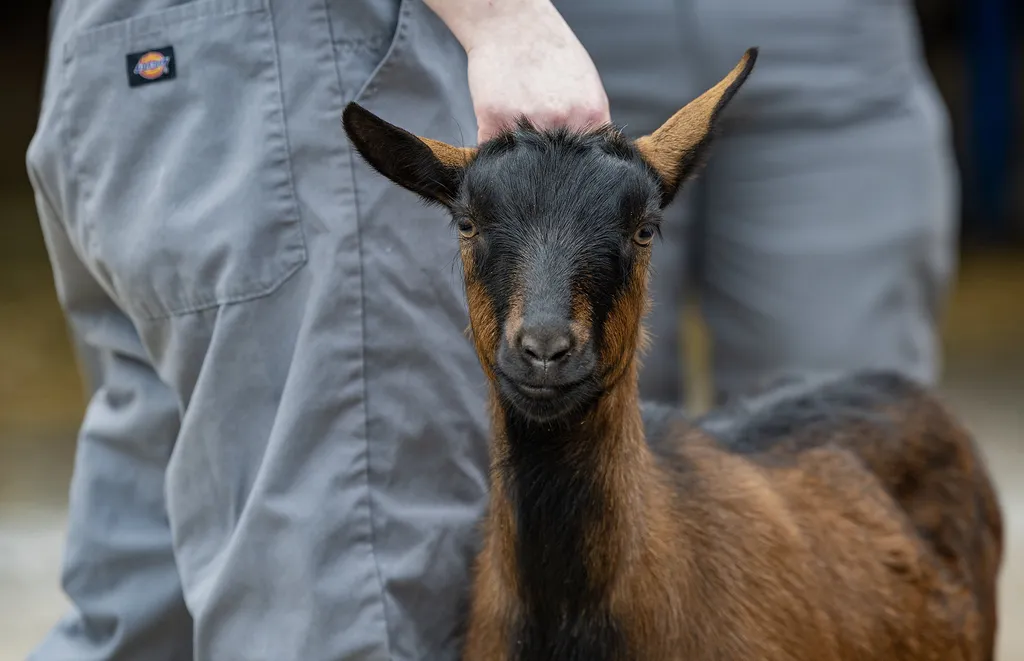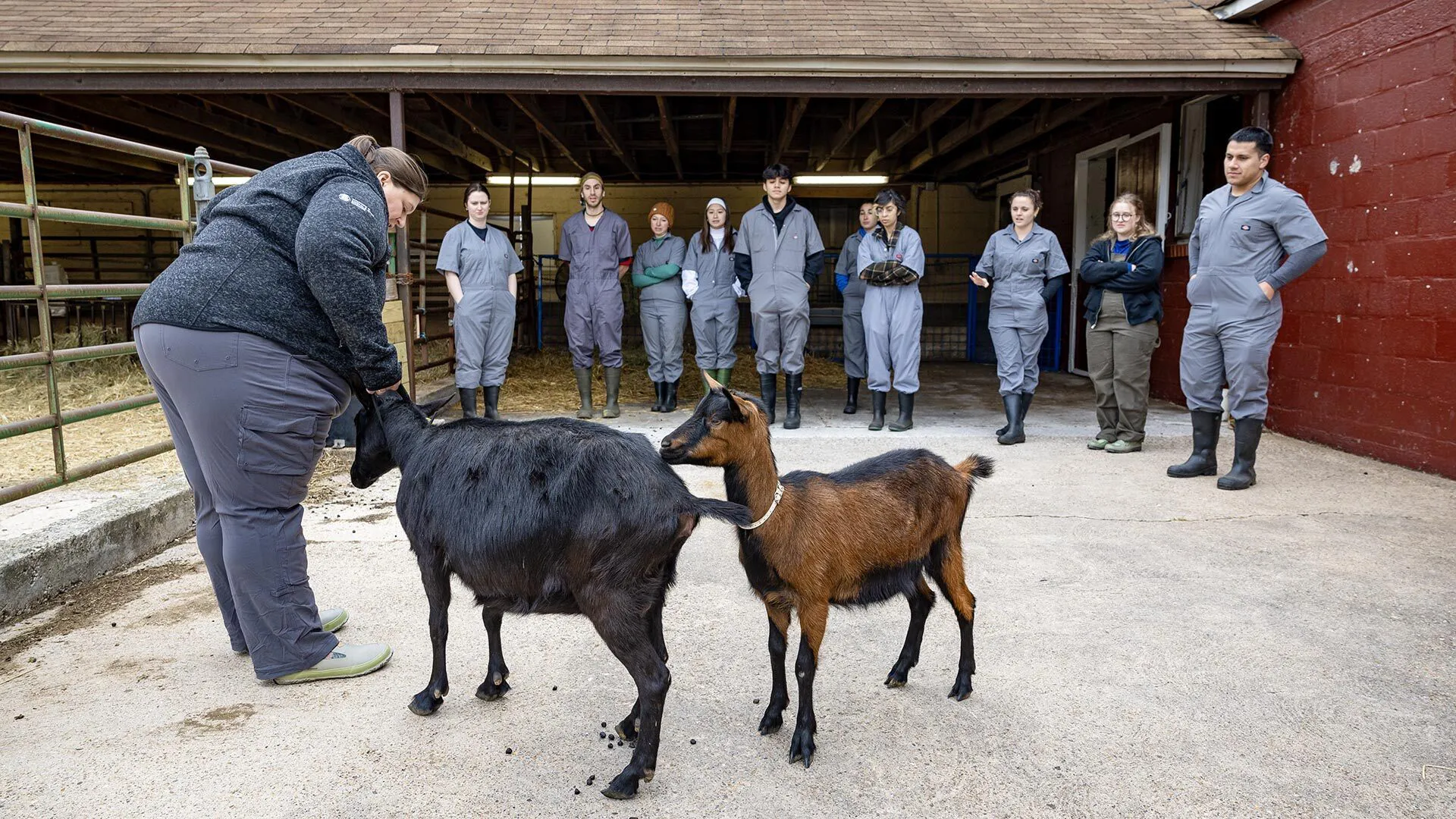- February 10, 2025
- By Karen Shih ’09
If this dreary winter has gotten your goat, one maa-velous pick-me-up is as close as the Campus Farm.
The University of Maryland’s Department of Animal and Avian Sciences last month welcomed two Oberhasli dairy goats, starting UMD’s first goat herd. Both will give birth to little ones—called kids—just before the end of the spring semester.

“We’re excited to give our students more hands-on experience,” said Monica VanKlompenberg, senior lecturer in the University of Maryland’s Department of Animal and Avian Sciences. While a wide variety of livestock have called the Campus Farm home over the decades, including sheep, pigs, chickens, horses and cows, it’s new territory for goats.
Throughout this semester, 10 students in a new goat management course, as well as interns, will work closely with Sadie, 5 years, and Ariana, 10 months, learning how to care for them, assist with births and milk them. The introduction of the goats is part of a transition at the Campus Farm, which retired its two permanent dairy cows last year. (Dairy cattle heifers and beef cattle will still be brought in on a temporary basis for students to gain experience.)
“Having these goats better utilizes our small campus farm,” said VanKlompenberg. “This more closely resembles more of what we see in agriculture in Maryland, which is on a smaller scale.”

The mother-daughter pair was donated by 2024 animal science graduate Cheyenne Van Echo’s family, which owns a farm in Rocky Ridge, Md. The goats arrived in early January, and now, visitors can stop by the dairy barn (closer to Xfinity Center) to see them any time the farm is open, though VanKlompenberg asks people to respect the gates and not to touch the animals, to help keep them healthy.
While UMD’s flock of about two dozen Katahdin sheep, which are bred for meat and require less day-to-day handling, are a longtime staple of the Campus Farm, the Oberhasli goats offer opportunities for students to provide more direct care, since they can produce milk for up to 10 months. “We’ve had some conversations with students about making goat milk soap—a little bit of entrepreneurship,” said VanKlompenberg, since UMD doesn’t have facilities to process milk for consumption.
One additional benefit of the goats: They’re easier to handle than sheep, so students can walk them and practice for livestock shows. During Maryland Day in April—which will mark the 100th anniversary of Ag Day, the precursor to UMD’s annual open house—VanKlompenberg and her students will create a special display for the new Campus Farm residents and possibly even show off the kids, who will be just a week or two old at the time.
“It will be fun,” she said. “We want to make sure the goats get out and about so people hear about them and see them.”

